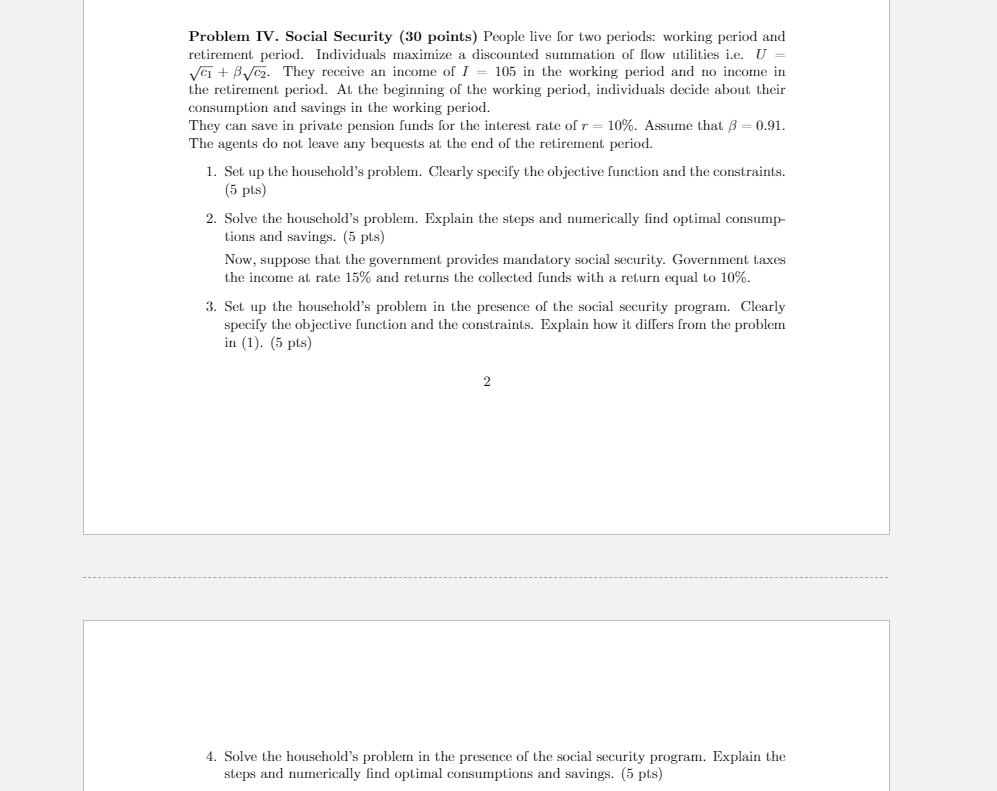Only part 4

Problem IV. Social Security (30 points) People live for two periods: working period and retirement period. Individuals maximize a discounted summation of flow utilities i.e. U Va + B/C2. They receive an income of I = 105 in the working period and no income in the retirement period. At the beginning of the working period, individuals decide about their consumption and savings in the working period. They can save in private pension funds for the interest rate of r = 10%. Assume that B=0.91. The agents do not leave any bequests at the end of the retirement period. 1. Set up the household's problem. Clearly specify the objective function and the constraints. (5 pts) 2. Solve the household's problem. Explain the steps and numerically find optimal consump- tions and savings. (5 pts) Now, suppose that the government provides mandatory social security. Government taxes the income at rate 15% and returns the collected funds with a return equal to 10%. 3. Set up the household's problem in the presence of the social security program. Clearly specify the objective function and the constraints. Explain how it differs from the problem in (1). (5 pts) 2 4. Solve the household's problem in the presence of the social security program. Explain the steps and numerically find optimal consumptions and savings. (5 pts) Problem IV. Social Security (30 points) People live for two periods: working period and retirement period. Individuals maximize a discounted summation of flow utilities i.e. U Va + B/C2. They receive an income of I = 105 in the working period and no income in the retirement period. At the beginning of the working period, individuals decide about their consumption and savings in the working period. They can save in private pension funds for the interest rate of r = 10%. Assume that B=0.91. The agents do not leave any bequests at the end of the retirement period. 1. Set up the household's problem. Clearly specify the objective function and the constraints. (5 pts) 2. Solve the household's problem. Explain the steps and numerically find optimal consump- tions and savings. (5 pts) Now, suppose that the government provides mandatory social security. Government taxes the income at rate 15% and returns the collected funds with a return equal to 10%. 3. Set up the household's problem in the presence of the social security program. Clearly specify the objective function and the constraints. Explain how it differs from the problem in (1). (5 pts) 2 4. Solve the household's problem in the presence of the social security program. Explain the steps and numerically find optimal consumptions and savings. (5 pts)







